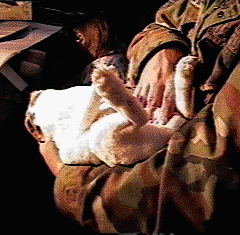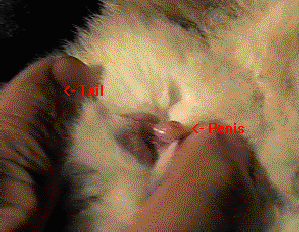Sexing / Gendering Rabbits
Some Basics Sexing rabbits is not really hard to do. You can usually do a good job identifying a buck from a doe, at least from the age of 3 weeks and on. An older buck is easy to identify. The head and body is generally more blocky than the doe. Does of the medium and large breeds often develop a fold of skin under their chins. This fold is called a dewlap. Older does are usually larger than bucks of the same breed. A buck's testicles can be seen on a hot day. The testicles must be kept at a certain temperature in order for sperm to be produced. The testicles descend further on hot days and are brought back toward the body on cool days. In this way their temperature is regulated. Determining the sex of an older rabbit from a distance is usually easy to do, keeping the above differences in mind. Before discussing close up sexual identification, let's go over some definitions. Definitions
To identify the sex of a rabbit at a closer range, you must hold the rabbit upside down. If done correctly, this hypnotizes the rabbit and makes it easier to examine. I always recommend wearing a long sleeve thick cloth jacket to avoid getting scratched by the rabbit.
The buck, on the other hand, will display, if less than 5 weeks old, a blunt white tube without a central line. It will not have pink traversing either side of a center line. Older bucks will present a pink tube with a pointed end that resembles a bullet. With younger rabbits, you must look very closely to see the difference.
| |||||||||||||||||||||||||
| CTTO |








Comments
Post a Comment